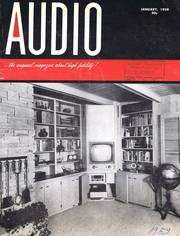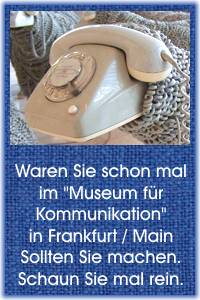Erläuterungen zu diesen US-AUDIO Seiten der 1950er Jahre
Die hier stehenden amerikanischen Artikel aus 1959 (aus der US-AUDIO) sind teilweise sehr gewöhnungsbedürftig, weil sie erstens aus einer längst vergangenen Zeit stammen und zweitens, weil dort in den USA ganz "anders" gedacht wurde als bei uns in Old Germany oder in Europa.
Vergleichbar mit unseren deutschen Hifi-Magazinen etwa ab 1962 ist jedoch, daß auch dieses Audio-Magazin ihre Anzeigen- Kunden und -Leser am Markt oder von anderen Magazinen (be- oder ab- ?) werben mußte. - Weiterhin sind die riesigen Dimensionen des amerikanischen Kontinents mit unseren hier in Europa nicht vergleichbar. - Ein Redaktions-"Trip" von New York nach Los Angeles oder Chicago oder gar in die Wüste nach Las-Vegas zu einer der CES- Audio- "Shows" war - auch mit dem Flugzeug - immer noch eine halbe Weltreise. Und jede Ausstellung oder "Messe" wurde als "Show" deklariert. Und natürlich, in USA musste alles "Show" sein, um beim Publikum einige Aufmerksamkeit zu erzeugen.
.
ABOUT MUSIC - What's in an Audience?
(Was ist ein Hörraum / Hörsaal ?)
by HAROLD LAWRENCE
.
New York City offers its inhabitants nearly as many varieties of musical fare as there are flowers in the Botanical Gardens. This abundance of musical activity often makes it impossible to avoid missing some fine concerts, especially when, during the height of the season, the Metropolitan Opera House, Carnegie Hall, and Town Hall each may be presenting important attractions on the same evening.
A critic like Irving Kolodin (music editor of The Saturday 'Review) can overcome this hurdle by shuttling between 39th and 57th Streets to see part of each performance - in anticipation of the schedule conflict, he has probably seen a dress rehearsal of the Met's production.
But non-editors will have to content themselves with reading the reviews, hoping to catch the missed concert the next time around. However, the likelihood is that only a tiny minority of music lovers will be upset by the duplication for, as any eclectic concertgoer will inform you, the audience overlap between different musical events is lower in quantity than is generally assumed. In fact, for each kind of concert, there is a corresponding audience.
The Debut Audience
First, let us consider the audience attending the debut of a pianist. The artist in this case is not a protege of Sol Hurok, has made no recordings, and has won neither the Leventritt Award, the Brussels Competition, nor the Moscow Tchaikovsky Prize.
He is merely one of numerous young musicians who plan to mark the beginning of their concert careers in the usual manner - namely, by means of a New York recital. With the proper financial backing, he has rented Town Hall, paid for the printing of tickets and programs, and seen the notice of his forthcoming recital duly listed in the programs-of-the-week page of the Sunday papers.
He does not expect to sell many tickets; indeed, his chief concern is to get enough free tickets into the hands of friends and relatives so as to have a respectable-looking, even if "papered," house.
If he comes from a large family, the chances are that a sizeable crowd will be in attendance. On these occasions, the hall takes on the festive atmosphere of a wedding reception, as cousins who have not seen each other in years exchange noisy greetings.
There is much hand-waving, cries of recognition and boisterous conversation. Here and there one notices an oasis of silence in the form of a husband, father, or uncle who has been dragged against his wishes to listen to a piano recital when he would prefer to remain home and watch television.
The house lights dim and the audience tears itself away from its animated social activity to focus attention on the stage. It betrays a lack of familiarity with concert decorum by the nature and timing of its applause.
From the initial ovation that accompanies the young performer's entrance, to the final round of applause after the last bow, the intensity never varies. It is no exaggeration to say that this audience will clap at the slightest pause, for example, between variations, movements of a sonata, preludes and fugues, and at the deceptive close near the end of Invitation to the Dance, while the more knowledgeable members of the audience (probably fellow students) loudly shush their less sophisticated neighbors.
By the time the slow movement of the "Pathetique" Sonata has arrived, not a few bored male relatives will have fallen asleep, only to be nudged awake at regular intervals by their indignant spouses.
The Intellectual Audience
There are no drowsers in the intellectual audience. Intense concentration is the order of the day. Gatherings at intermission time are more subdued than those at debuts; politics, the theatre, art, books, and psychoanalysis are the principal topics of conversation.
To be worthy of the intellectual audience, music must provide a sound basis for discussion of ideas. Here is a partial list of the most "verbalized" composers and types of music favored by this audience:
Stravinsky - Close association with poets, choreographers, painters (Cocteau, Diaghilev, Picasso, Chagall, Bakst, Nijinsky, Auden, and so on).
Weill - Between-the-wars German political and social degeneration a fascinating backdrop for Weill's bitter musical commentary.
Schoenberg - Irresistible attraction to intellectual audience due to radical implication of serialization (12-tone system).
Harpsichord recitals, "musica antiqua," madrigal groups, and so on - Automatic exclusion of music of the Romantic Era.
Weber - A fascinating miniaturist; also called musical counterpart of Paul Klee, Swiss abstract painter.
The above examples do not include Firebird, Petrouchka, and "Transfigured Night" because these pieces have become "popular" works in the symphonic repertoire. This is the kiss of death. For when the general public takes a work to its collective bosom, you can be sure that the intellectual audience will abandon it sooner or later.
.
The Lieder Audience
Coolness gives way to warmth, theorizing to sentiment, in the case of the lieder audience. Imported from Europe before World War II, this is one of the most attentive audiences in the world of music. The word "attentive," though, is too weak a description; rapt is better, especially when referring to a Lotte Lehmann recital. The overflow audiences that attended this great artist's performances shortly before her retirement transported Town Hall from 43rd Street to the Musikverein in Vienna.
The hush that filled the hall was almost palpable, handkerchiefs daubed at misty eyes, and the applause rolled in ardent, emotional waves. The magic of Lehmann and her audience has never quite been duplicated in recent years, though the same audience gives such artists as Dietrich Fischer-Dieskau, Elisabeth Schwarzkopf, and Irmgard Seefried warm receptions.
The Controversial Audience
The audience drawn by controversy normally contains a large percentage of non-musical elements. The postwar appearances in New York of politically-tainted German artists turned Carnegie Hall into a political arena, while the arrival of the cream of Russia's musical and terpsichorean talent set New York agog. But after the smoke of controversy has cleared away, and the artists' intrinsic values calmly appraised, the political element diminishes in size and importance.
Opera Audiences
Although the Metropolitan Opera is a tea room in comparison with some of Italy's boisterous opera houses, the claques, official and otherwise, give Met audiences their special flavor. Everyone is familiar with the more flamboyant bravo-shouter, but there are more subtle examples of the species.
For example, take the case of the young lady who attended a performance of "Lucia di Lammermoor" in which her favorite soprano sang the title role. When Lucia dies in the opera's penultimate scene, leaving the stage to the tenor, the fan saw no point in remaining for the rest of the performance, and walked out of the house looking like a "this is where I came in" moviegoer.
The Folk Song Audience
Youth is the most noticeable ingredient in the folk song audience. Many of its members play guitar or recorder, collect discs by the Weavers, Alan Lomax, and so on, and congregate around the fountain in Washington Square Park to listen informally to bearded modern troubadours.
A comprehensive survey of audiences would have to include the subscription night at the Philharmonic, opening night at the Metropolitan Opera House, benefit audiences, and many others. The next time you attend a concert, look around you and try your hand at audience analysis.



